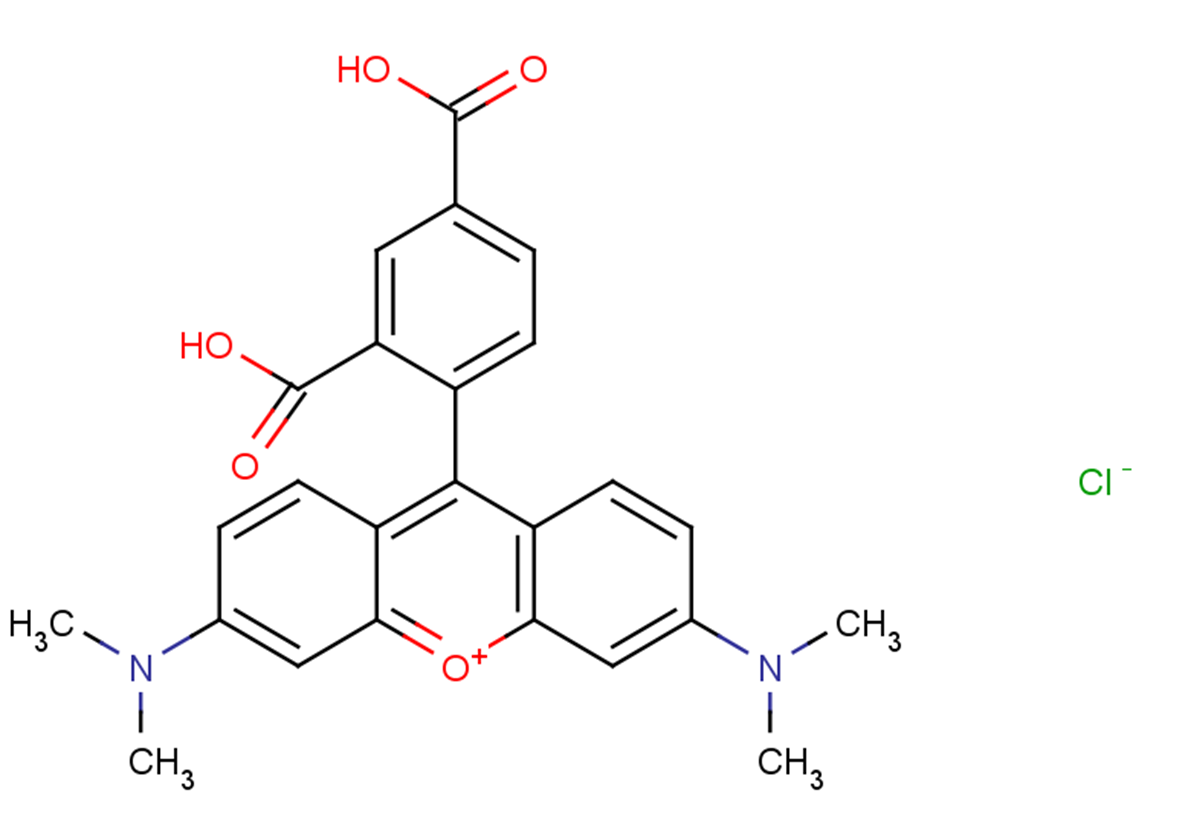
5-TAMRA chloride(91809-66-4 free base)
CAS No. 125481-77-8
5-TAMRA chloride(91809-66-4 free base)( —— )
Catalog No. M23425 CAS No. 125481-77-8
5-TAMRA can produce bright, pH insensitive orange fluorescence (Ex/ Em= 546 / 579nm), and has good photostability
Purity : >98% (HPLC)
 COA
COA
 Datasheet
Datasheet
 HNMR
HNMR
 HPLC
HPLC
 MSDS
MSDS
 Handing Instructions
Handing Instructions
| Size | Price / USD | Stock | Quantity |
| 5MG | 272 | In Stock |


|
| 10MG | 408 | In Stock |


|
| 25MG | 612 | In Stock |


|
| 50MG | 918 | In Stock |


|
| 100MG | 1233 | In Stock |


|
| 500MG | 2457 | In Stock |


|
| 1G | Get Quote | In Stock |


|
Biological Information
-
Product Name5-TAMRA chloride(91809-66-4 free base)
-
NoteResearch use only, not for human use.
-
Brief Description5-TAMRA can produce bright, pH insensitive orange fluorescence (Ex/ Em= 546 / 579nm), and has good photostability
-
Description5-TAMRA can produce bright, pH insensitive orange fluorescence (Ex/ Em= 546 / 579nm), and has good photostability
-
In Vitro——
-
In Vivo——
-
Synonyms——
-
PathwayOthers
-
TargetOther Targets
-
RecptorOthers
-
Research Area——
-
Indication——
Chemical Information
-
CAS Number125481-77-8
-
Formula Weight466.91
-
Molecular FormulaC25H23ClN2O5
-
Purity>98% (HPLC)
-
Solubility——
-
SMILESCN(C1=CC2=[O+]C3=C(C=CC(N(C)C)=C3)C(C4=CC=C(C(O)=O)C=C4C(O)=O)=C2C=C1)C.[Cl-]
-
Chemical Name——
Shipping & Storage Information
-
Storage(-20℃)
-
ShippingWith Ice Pack
-
Stability≥ 2 years
Reference
1.Differently fluorescence-labelled dibenzodiazepinone-type muscarinic acetylcholine receptor ligands with high M2R affinity[J]. RSC Medicinal Chemistry, 2020, 11.
molnova catalog



related products
-
PEN (mouse)
Endogenous peptide GPR83 agonist. ProSAAS-derived neuropeptide. Activates phospholipase C (PLC)-mediated signaling cascade in mouse hypothalamus.
-
Neuromedin S (human)
Neuromedin S (human) is a neuropeptide that contains 33 amino acids. Neuromedin S (human)has been identified in the brain as an endogenous ligand for the orphan G-protein coupled receptor (GPCR) FM-4/TGR-1 and acts on the neuromedin U (NMU) receptor 2 (NMUR2) in the regulation of body weight homeostasis.
-
NH2-C5-NH-Boc
NH2-C5-NH-Boc (PROTAC Linker 23) is an alkyl chain-based PROTAC linker that can be used in the synthesis of PROTACs.



 Cart
Cart
 sales@molnova.com
sales@molnova.com


